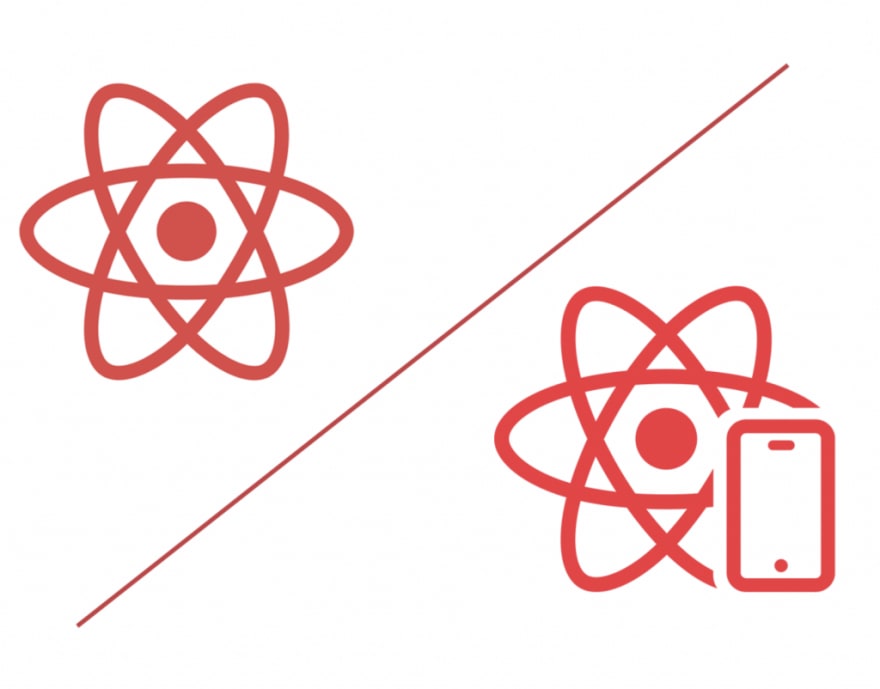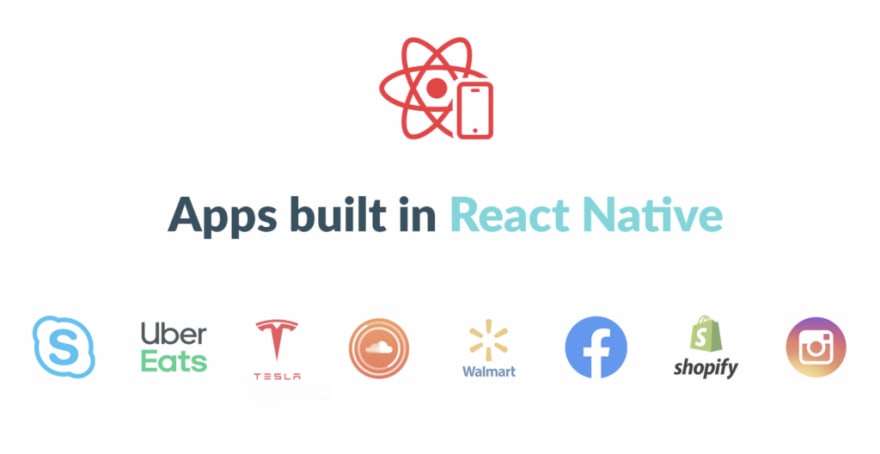If you are familiar with the basics of React Native, and just wondering about business and development advantages for 2020, go to the bottom of the article with "Pros and Cons" and "Development advantages AD 2020".
If you are not, keep reading from the top.
What is React Native?
You probably know React Native development as an open-source mobile app platform created in JavaScript that is taking the mobile app development market by the storm.
It has a number of great advantages that are saving you many development costs and makes your app truly outstanding.
However, like any other platform, it has its cons as well.
So, before you add it to your tech stack, let's go over the FAQ that I think every developer should be familiar with.
Why we needed React Native?
Before React Native arrived at the market, people wanted to build mobile apps mostly in native platforms.
It was mainly related to the high performance, and great customized user experience.
But they had their limitations as well.
For instance, native development environments were only working for a certain OS. That means, in order to develop applications for different platforms, you need a help of different developers.
Thanks to React Native, developers could work around a single tool to develop cross-platform applications with a truly native experience.
More than that, cross-platform development and React community is constantly growing, Many functionalities we consider impossible few years ago, are now working perfectly without a need for native development.
What’s the difference between React and React Native?
The difference is quite simple.
We use React for web apps, and React Native to develop mobile apps.
Where React focuses more on improved UI (User Interface), React Native is sharing a common logic layer for all OS. That provides solutions to problems which were being dealt for quite a while now, such as development inefficiency, slower time to deployment and less developer productivity.
It is important to note that React is a library used for web development whereas React Native is a platform.
Another interesting thing is when you want to use React Native, you have everything you need to start a project. On the other hand, starting a new project with React means you have to select the bundler and figure out the modules which will work best.
Who is using React Native?
You may hear that big players are considering React Native as their development platform more often.
Here's only a small chunk of them:
The list goes long and probably will keep on increasing as React Native is delivering the features and support that is hard to find anywhere else.
Pros and Cons of React Native
The most important advantages of React Native are the ones regarding development efficiency and economy.
Although there are still some areas that native development is doing better, you may want to consider very carefully when React Native is a good choice for you specifically. You can read about it in another article.
Pros
- Development speed (cost) - what developers love about React is that they’re able to reuse and recycle components developed before by them and wide React Native ecosystem. They can also share their codebase and make them work faster.
- Works everywhere - Once you learn (hire) React Native, you can build apps for iOS, Android, and Windows.
- User Experience - as long as you are not using extremely complicated designs and interactions, you are still able to build high-performance apps and deliver absolutely great user experience.
- Faster time to market - you can arrive on the market much faster to test your MVP, get feedback and adapt changes accordingly without a need for a big investment.
- Help on demand - React Native community is massive. Many problems that you may face during development, may already be fixed somewhere out there.
- Maintenance cost - you only deal with one codebase.
- React Native apps are visible - they get listed in AppStore and Play Store. Not like PWA.
Cons
- Performance is still lower than native - React Native is not able to use all the blessings and potential of a specific platform. Native apps on the other hand, can really maximize functionalities and deliver the ultimate user experience in the result.
- Not efficient design-wise - If you consider complicated designs or advanced interactions as a crucial part of your business advantage, you should definitely go for native development.
- Custom modules - you can access many custom modules, yet, there may be a need for some specific components that you will have to build from scratch yourself.
Development advantages of React Native AD 2020
There are still few things you should know that may appear crucial in your teck stack decision:
- Easy to work with – experienced developers will definitely appreciate the development experience. Meaningful error messages, time-saving and robust tools make it a premium choice over other platforms.
- Changes preview – you don’t have to rebuild the application, again and again, to see changes. It saves a lot of time and makes things quick and efficient. Hit “Command+R” to refresh the application.
- Quick iteration cycles – which just simply adds more value.
- Intelligent debugging tools – and error reporting mechanisms. Give it an advantage over others and allows developers to focus more on the productive part.
- Easier to debug – uses Flipper as default.
- Keep things minimal and worthy – it doesn’t force you to work in Xcode or Android Studio for iOS or android apps respectively.
- A large community of developers – who are contributing day in, day out.
- Code reusability – developers can easily integrate 90% of the native framework and reuse the code for any platform. This feature not only saves time but also helps to cut down the cost of building two apps. Cool thing is that you can use the web app code (written in React) for mobile apps.
- Pre-developed components – numerous open-source libraries are available to accelerate your work.
- Live reloading feature – it helps to compile and read the file from the point where the developer made changes. Then a new file is offered to the stimulator which automatically reads the file from the beginning.
- Compatible with third-party plugins – and does not require high memory to process. You don't need any specific web views functions and all native modules are linked with the plugin through the framework. Smoother running and faster loading are key features for it.
- Transform web projects into mobile applications – work done on this platform is easy to understand, and anyone can work around it although they were not previously engaged in it. It increases flexibility and web updates become consistent.
- Smoother and faster UI – as compared to classic hybrid ones. The interface created through React Native is highly responsive and feels fluid.
Summary
React Native is an exciting framework that enables web developers to create mobile applications that have knowledge in React and JavaScript.
It enables faster mobile development and efficient code sharing for all operating systems without compromising on the quality of the product.
High efficiency and low costing are also the attributes that make work exciting for armies of developers.
Supported by the biggest players on the market, this technology will probably stand a test of time and will only get better.














Top comments (0)